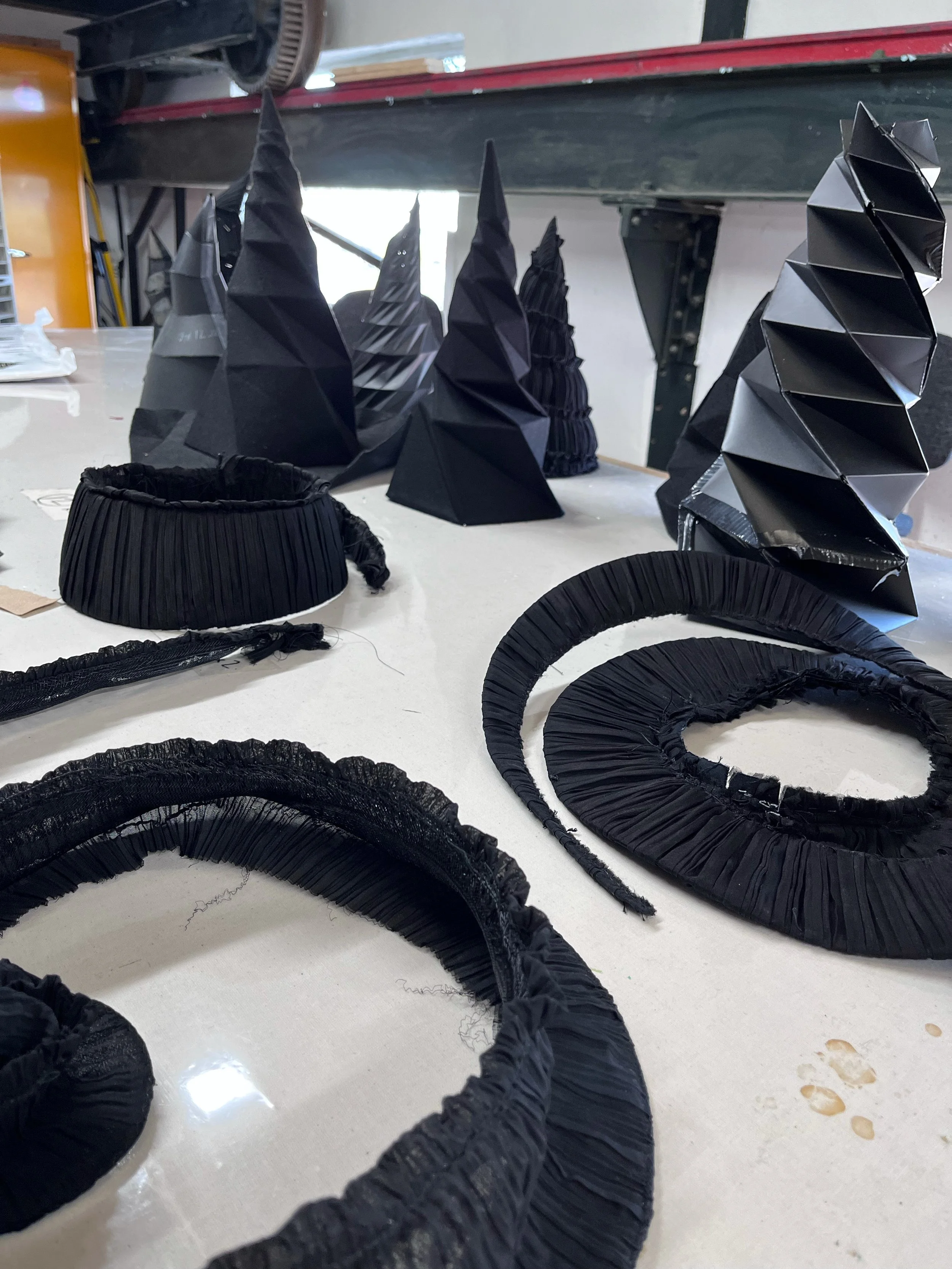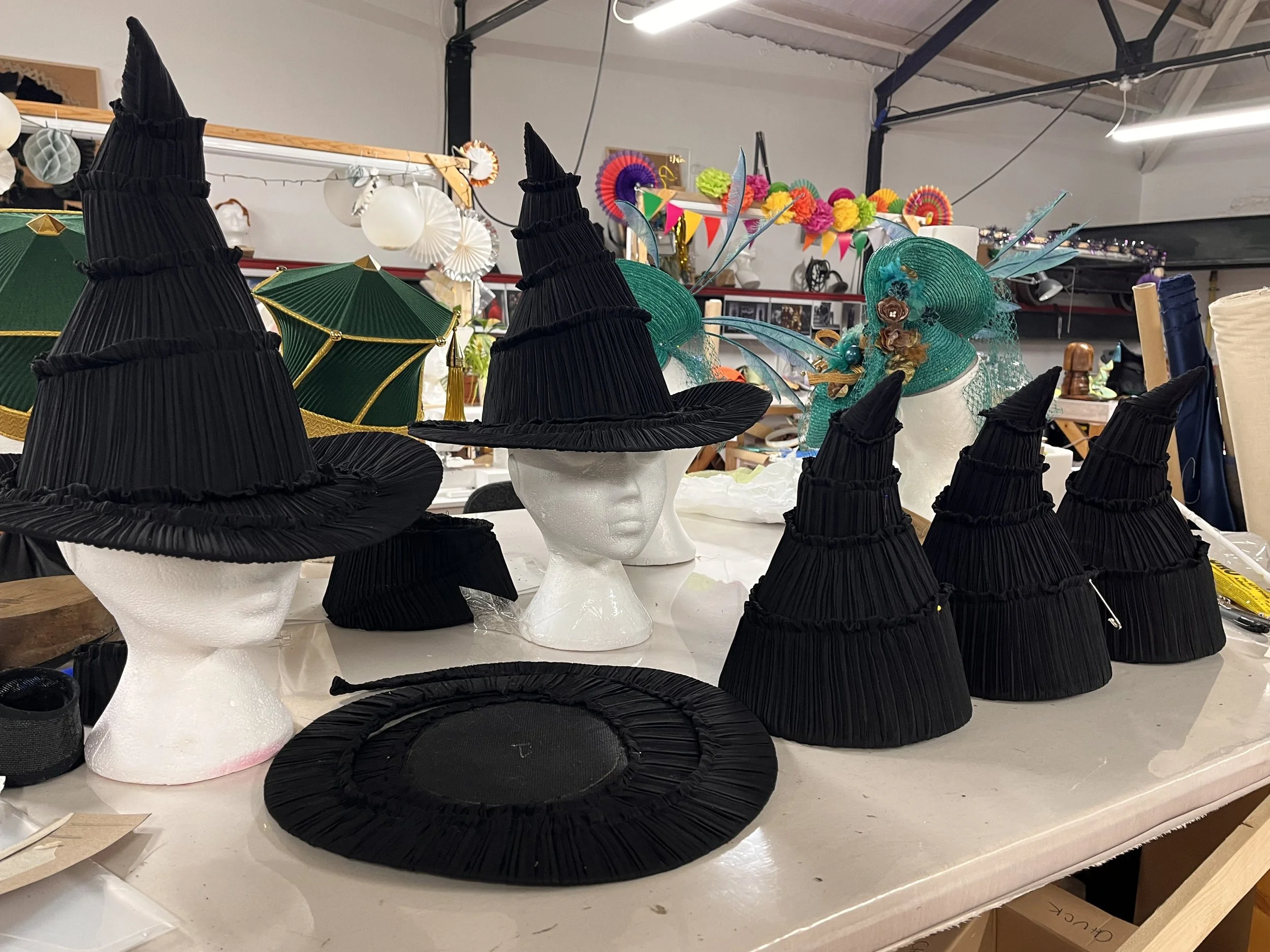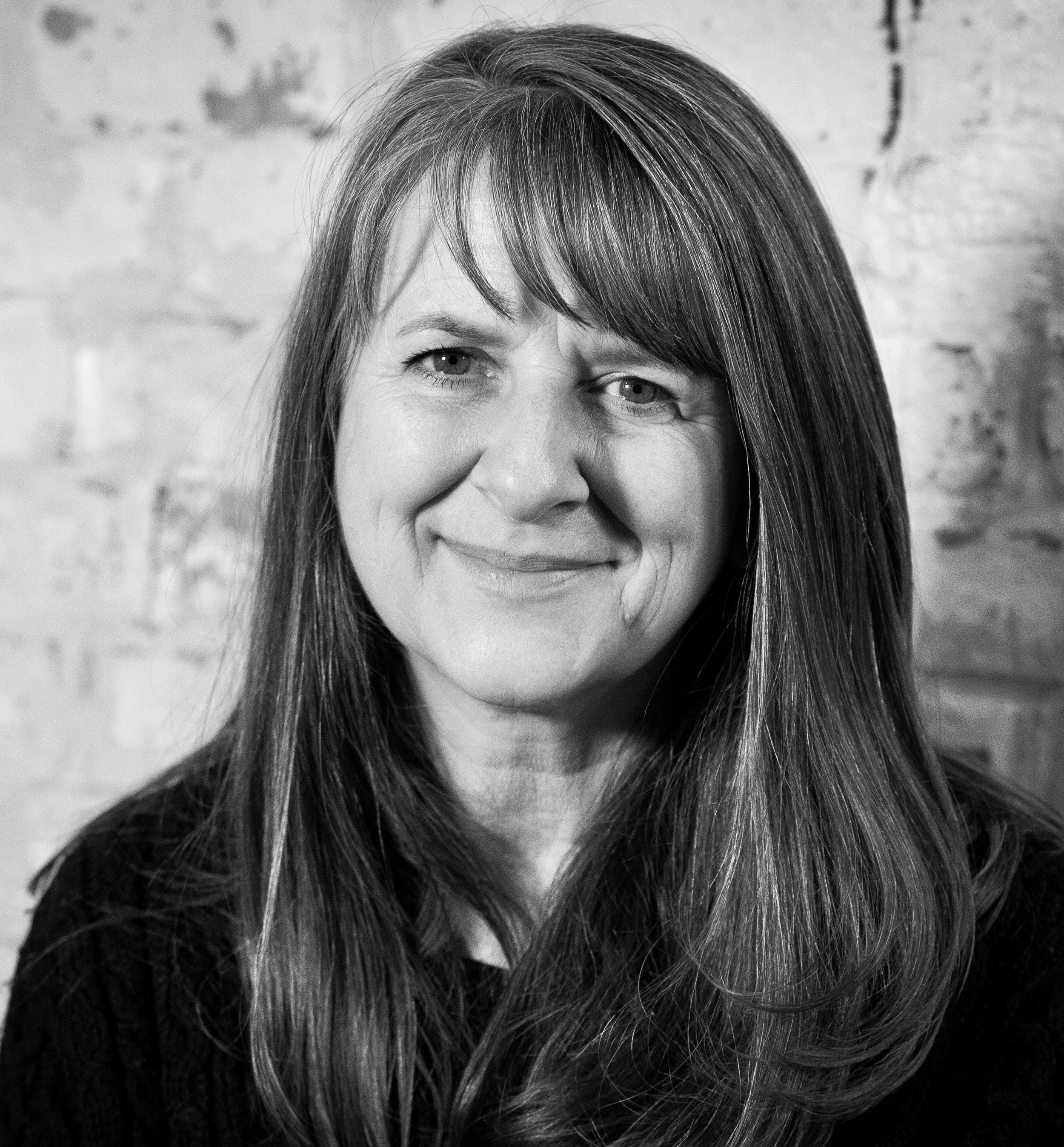Sophie Lambe
‘Elphaba’ - Wicked:Part 1
This was the final design for Elphaba in Wicked Part 1- 2024 designed by Oscar winning Costume designer Paul Tazewell. I made many prototypes from his sketches before we reached this iconic shape and silhouette. His concept for Elphaba's designs was inspired from natures patterns, The Fibonacci spiral, fungi, mushroom gills and frills. The first spiralled crown I made was too uniform, so we started to disrupt the silhouette to reflect her quirky character and make it more asymmetrical. The description of the hat in one scene popping up in Galinda's hands as she proffered it to Elphaba for the first time also affected its final shape. It was important to give a generous brim enabling her, as she placed it on her head during the Ozdust ball, to take ownership of her newfound confidence and place in the world.
Not for sale.
“The Elphaba hat and costume had to follow an iconic image from the past, the Wicked Witch of the West from the Wizard of Oz. The 1939 film was a childhood memory for many people, this hat honours the costume designs of the past - bringing a new image of a modern day witch.
As part of the design Paul chose pleated fabric with a flange to emulate natural forms, It is a process that has been used for centuries, but the techniques used to create them are still often the same today.The use of pleating itself dates back to ancient Egypt around 2000 BCE, often to denote wealth and style. ”
Materials and Techniques
Buckram/millinery wire/black pleated chiffon /black cotton and russia braid.
Traditional millinery techniques have been used to make the hat as it is mostly hand sewn . A flat pattern was followed for the individual sections and spiralled brim. The pleating was also done by traditional method by a company Ciment Pleating who specialise in only that. Huge fabric rolls would arrive wrapped in the brown pleated paper. It was important to keep the tension on the chiffon, without pulling out the pleating, to maintain the sharp lines. Theatrical millinery often uses stronger more durable materials for the stage. However this was for film so it had to maintain its shape, during often difficult stunt action, flying and hanging upside down, but also have a fine finish to stand up to the HD of close ups.
Millinery Heritage
“I had begun collecting hats before my BA in Fine Art. I then began making hats with Rose Cory in the late 1980s, which evolved into working at The Royal Opera House, London for 5 years. I now work primarily in Film and TV as an in house milliner.
I have always made things with my hands, it seemed a natural progression from my degree in Sculpture to become a milliner. It is so important to retain the skills from these now more rare professions. Hats have been handmade for centuries, the factory made products have there place, but it is the quality and love incorporated into a hand made piece that stands out . Some of the skills are now placed on the endangered list of skills in this country, so we need to keep making, teaching and passing on what we have learned to the younger generations.
My great Aunt learned millinery techniques as a model in Paris in the 1930s , and I have recently learned that my grandfathers’ family owned a Silk merchants in London before, during and after WW1.
We also had a family friend who was very special to me who helped set up and run the costume course at Wimbledon School of Art - Peter Bucknell. He left us a book he illustrated of Evolution of Fashion that is one of my favourite books and a constant reference for me, as it has patterns for every illustration, fabric and trim suggestions. ”
About Sophie Lambe
Sophie completed an Art Foundation followed by a BA Hons. in Sculpture at De Montfort University. Her first millinery job was for the BBC during her Foundation year. This background of art and sculpture is significant in her work and processes.
Sophie trained in Couture Millinery with Rose Cory and she then spent four years in the Hat and Jewellery department at the Royal Opera House, where she honed her skills both in Millinery and Jewellery.
Sophie later began working in Costume, running the Costume department for “Riverdance the Show”(Liffey Company).
Since 2015, she has specialised in Millinery for Film and TV, in-house as part of the Costume team or from her home studio.
Her credits as HOD Milliner include the following feature films:
Wicked Part 1 & 2 , Hamnet, Snow White, Emma, Fantastic Beasts 1,2&3, Last Christmas, Victoria and Abdul and Paddington 2 and TV productions - Wednesday 2 ,The Regime, Bridgerton Season 1 & 2 and Masters of the Air.






